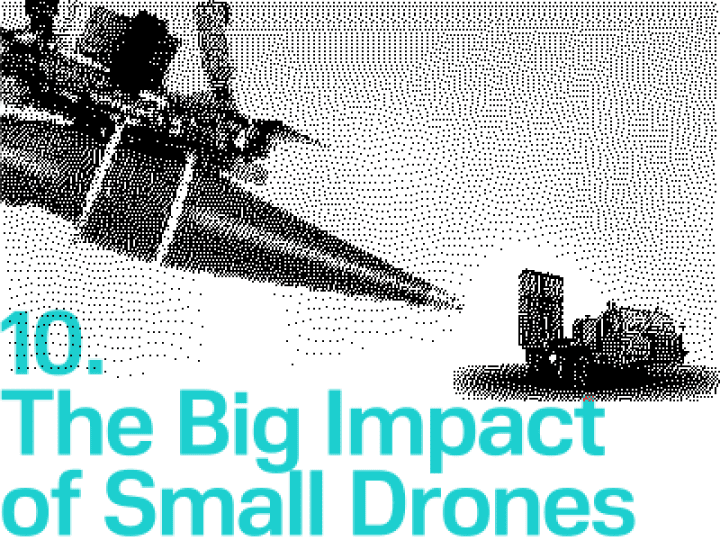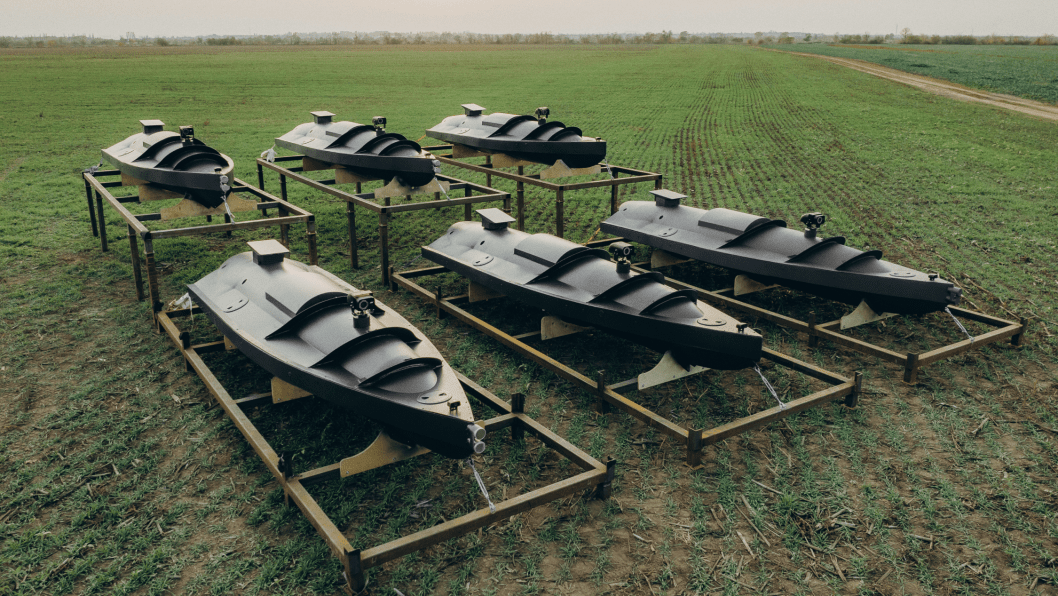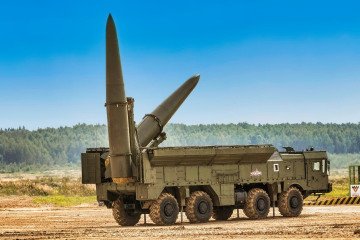- Category
- War in Ukraine
10 Ways the War in Ukraine Has Changed Global Military Tactics and Strategy

Russia’s full-scale war in Ukraine has been ongoing for more than three years. These hostilities have become a significant source of knowledge for military theorists and analysts. Here are ten examples of how three years of full-scale war reshaped global military tactics and strategy.
I see you

For over a century, the classic frontline tactic was to secretly concentrate forces in a specific area and launch a surprise attack to break through enemy defenses. However, technology has changed this approach. Today, with ubiquitous drones and easy access to satellite imagery, amassing a strong strike force undetected is nearly impossible—troop concentrations and logistical movements are spotted immediately.
One of the rare cases where this tactic succeeded was Ukraine’s breakthrough into Russia’s Kursk region in August 2024. The attack was masked partly because Russians did not expect the war to extend onto their territory. Meanwhile, Ukrainians spread disinformation that Russia was planning an attack in the area, saying they were increasing defense while preparing an offense.
Stay away from me

With the development of long-range and high-precision weaponry, even areas dozens of kilometers behind the front line have become vulnerable. Previously, depots, command centers, and control hubs could be located relatively close to the battlefield. But now, even at distances of hundreds of kilometers, they remain targets for precise missile and drone strikes.
This has forced militaries to adapt by dispersing stockpiles, constantly relocating them, establishing deep-tiered logistics, and actively employing camouflage techniques. The war in Ukraine has demonstrated that large, stationary warehouses are doomed targets, while an effective supply chain ensures that the enemy remains unaware of where the next shipment of ammunition will be.
Cyberwarfare malfunctions

The idea that cyberattacks could paralyze an enemy’s entire military apparatus has been overstated. Despite numerous reports from both sides about devastating attacks on critical infrastructure, most of these disruptions are quickly mitigated: systems are restored, workarounds are found, and essential military networks operate in isolated modes.
In December 2023, Russian hackers managed to breach the defenses of Ukraine’s largest telecom provider, Kyivstar, leaving 24 million subscribers without communication for several days. However, the infrastructure was eventually restored, and the attack had little impact on the battlefield.
This does not mean that cyberspace is irrelevant—it remains a constant battleground. But for now, wars cannot be won with keyboards alone.
Grandfathers helping grandsons

High-tech weaponry provides a significant advantage but does not replace conventional means of warfare. The effective formula for large-scale modern war is a combination of advanced technology and old but still functional equipment. Future tanks fight alongside reactivated T-64s from the 1960s, while drones adjust artillery fire from guns that date back nearly to World War II.
Even Maxim machine guns, developed 150 years ago, have been used on the front lines. Their water-cooled barrels allow for sustained fire over several minutes. While modern equivalents are lighter and more convenient, prolonged fire—even for a minute—can overheat barrels, causing malfunctions. The best example of this blend of old and new occurred in October 2024 when Ukrainian forces shot down a modern Iranian Shahed drone using a Maxim machine gun designed in 1883.
The conclusion is simple: high-tech is good, but wars cannot be won without sufficient weapons and ammunition.
Davids vs. Goliaths at sea

The Russian Black Sea Fleet was once the most powerful in Russia. It included six submarines, six large surface ships (including a missile cruiser), 36 other vessels (including landing ships), as well as support ships, aviation, and marine infantry. According to Ukrainian Navy Commander Vice Admiral Oleksiy Neizhpapa, Russia’s naval forces outnumbered Ukraine’s by at least 12 to 1. However, this numerical superiority did not save the Russian fleet.
Ukraine first attacked the enemy with naval drones in September 2022. Since then, these drones have evolved into multi-functional platforms performing a wide range of combat tasks. They were responsible for damaging the Crimean Bridge and sinking or disabling so many Russian ships that the Black Sea Fleet was effectively reduced to a flotilla and forced to halt operations near Ukrainian shores. New drone modifications are now equipped with flamethrowers and missile systems, and they have even shot down helicopters.
The emergence of naval drones raises critical questions for global militaries about how to defend traditional large warships against swarms of fast, small drones attacking from all directions.
Only time will tell

Many Western military doctrines emphasize blitzkrieg-style operations aimed at quickly suppressing resistance. For example, the French armed forces have around 200,000 personnel. However, according to experts, their military is primarily designed for expeditionary operations, low-intensity conflicts, and peacekeeping missions, rather than large-scale warfare.
Modern war between relatively equal adversaries is not a quick technological conflict. It still involves trenches, infantry, and thousands of artillery shells fired daily. This is not a war of maneuver but a war of attrition—like the ongoing fighting in Ukraine, where the front line stretches over 1,000 kilometers.
That’s not gonna be easy

To successfully conduct an assault at the platoon level, multiple elements must be synchronized: infantry and armored vehicles, electronic warfare systems (to counter enemy drones and communications), artillery for support and counter-battery fire, and UAVs for reconnaissance and targeting. And that’s just for a platoon-level operation involving a few dozen soldiers. The more forces involved, the more complex the coordination.
Successful combat operations have always depended on communication and coordination. But modern warfare is an extremely intricate system where, without clear communication, automated processes, and instant adaptation to new threats, even the best-equipped unit can be defeated.
The evolution of artillery warfare

In past wars, artillery often followed the principle of "dig in and keep firing." Now, the approach is more like "shoot and scoot." Counter-battery radars and reconnaissance drones make lingering in one place a death sentence. Firing positions are sometimes changed multiple times a day, and success depends not only on the number of shells but also on targeting speed, intelligence efficiency, and the ability to quickly relocate after firing.
This is where systems like the American HIMARS and the Swedish Archer self-propelled artillery shine. They embody the modern artillery doctrine—fire rapidly and disappear without a trace.
The sky is under threat

No air defense system is completely impenetrable. If an enemy launches a hundred cheap drones followed by several high-precision missiles, even the most advanced defense systems will be overwhelmed. Both Ukraine and Israel have encountered this challenge—enemies saturate air defenses with inexpensive targets, forcing them to waste costly missiles, leaving key sites vulnerable.
The future of air defense likely lies in a combination of multi-layered systems, including interceptor drones, mobile SAM systems, and even automated laser systems, which are already being used in Ukraine.
The big impact of small drones

In the 2020 conflict between Azerbaijan and Armenia, heavy strike drones—especially the Turkish Bayraktar—played a decisive role. They also excelled in the early stages of the war in Ukraine, devastating long Russian convoys. However, as time passed, air defenses and electronic warfare adapted to detect and neutralize them.
Instead, the real game-changer has been something completely different from these large aerial behemoths—small FPV drones. Costing only a few hundred dollars, they can destroy armored vehicles worth millions. They are ubiquitous, inexpensive, flexible, and deadly. These drones are used for reconnaissance and attacks on tanks, armored personnel carriers, and even individual soldiers. Among their most expensive "trophies" are the Osa air defense system ($10 million), the Tor missile system ($24 million), and part of an S-350 Vityaz air defense launcher, worth over $135 million.
The war of the future is not just about hypersonic missiles—it’s also about swarms of small drones making the battlefield highly transparent and lethally dangerous for any equipment or personnel.


-c42261175cd1ec4a358bec039722d44f.jpg)
-46f6afa2f66d31ff3df8ea1a8f5524ec.jpg)
-6359eca46c72bde40a90abaaadd6eaa8.png)
-29a1a43aba23f9bb779a1ac8b98d2121.jpeg)


-206008aed5f329e86c52788e3e423f23.jpg)